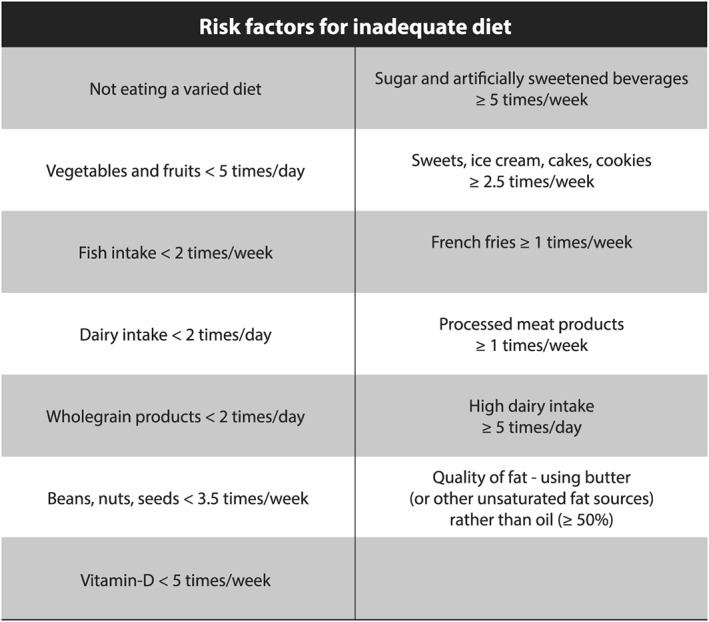Figure 1.

Risk factors for inadequate diet. The frequency of consumption was recorded in the list. This information was converted to frequency per week for all food groups, which was then transformed into 13 predefined dietary risk factors for inadequate diet. The risk factors were mainly based on the Icelandic Food‐Based Dietary Recommendations (Embætti landlæknis, 2016), which are based on the Nordic Nutrition Recommendations (2014). If the women excluded/avoided any of the main food groups (cereal, vegetables/fruits, fish, meat, eggs, high‐fat foods, or dairy), they were categorized to the group not eating a varied diet. Cut‐offs for sugar/artificially sweetened beverages and high dairy intake were set in line with Nordic studies. They show that high intake of these products is associated with high GWG (Hrolfsdottir et al., 2016; Olafsdottir et al., 2006; Renault et al., 2015) and adverse birth outcomes (Englund‐Ogge et al., 2012; Olsen et al., 2007; Zhu et al., 2017)
